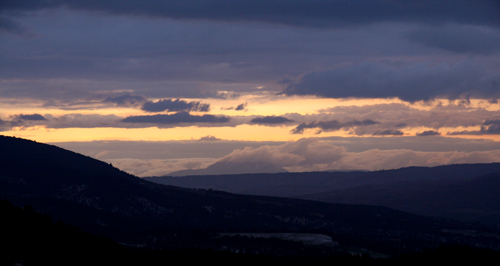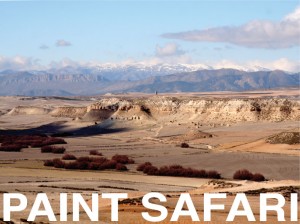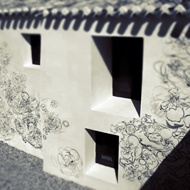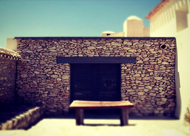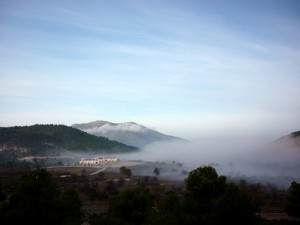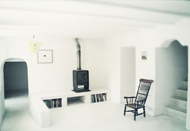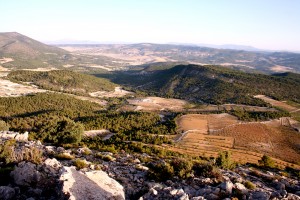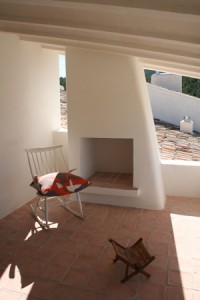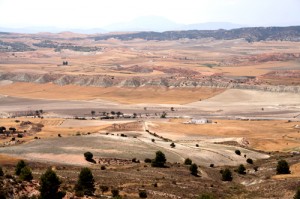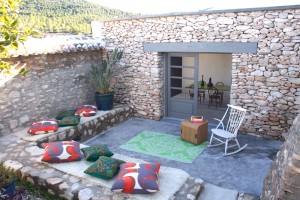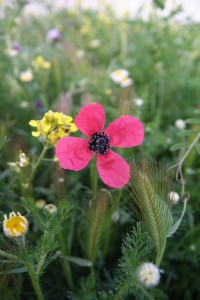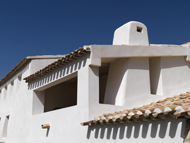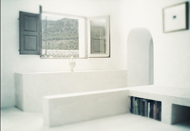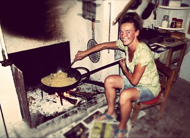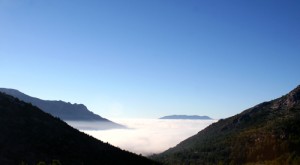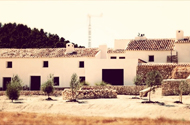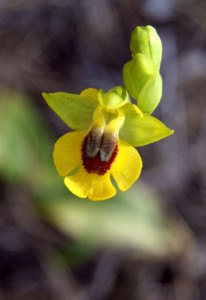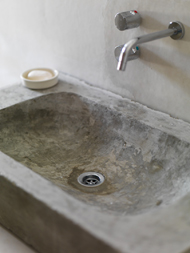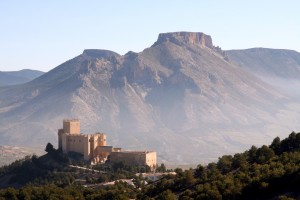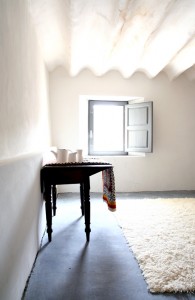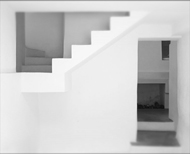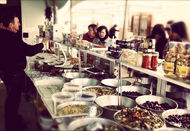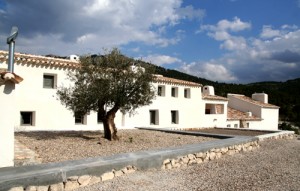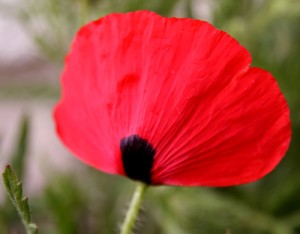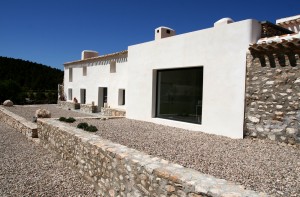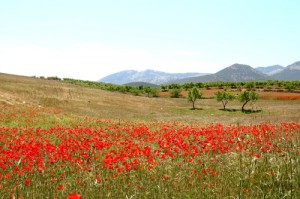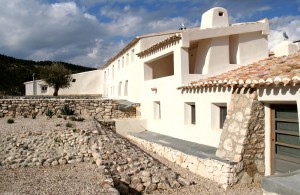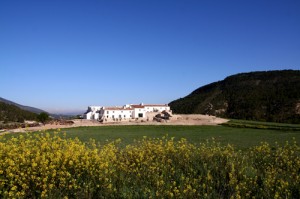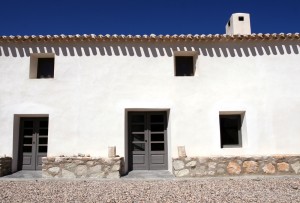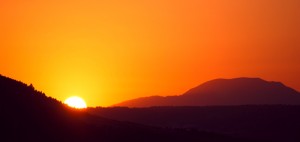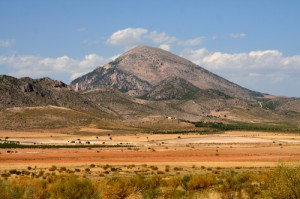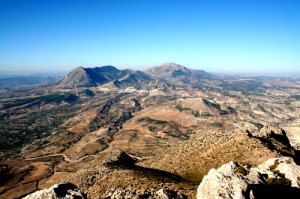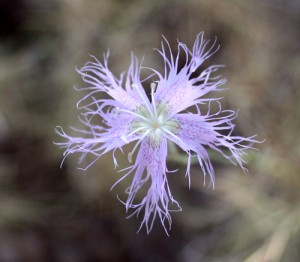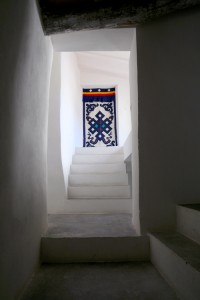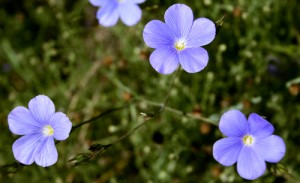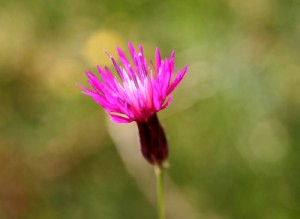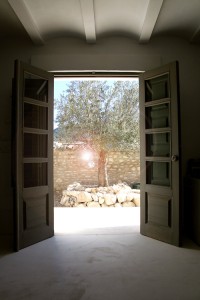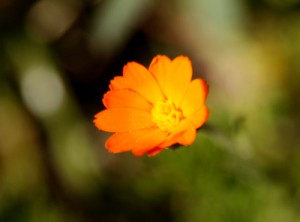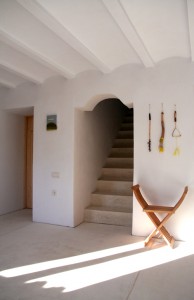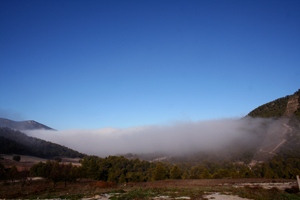March 31, 2009 at 6:25 pm
· Filed under Landscape
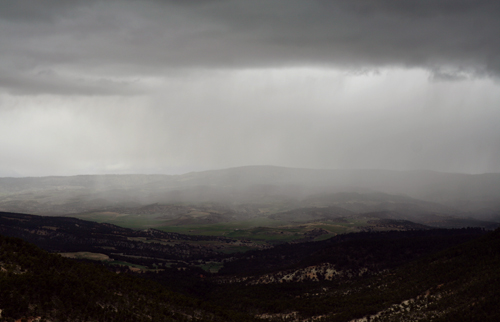
and an aborted walk to the top of Pena Cassenova with my niece Elsa and her friend Hero. Rain flooded the sky and the land causing us to take refuge in a small, shallow cave. At our altitude it was hail and once it had passed the rocky slopes were rendered too slippery to carry on.
Nevertheless, as usual, whatever the weather, it afforded good, dramatic views.
As I write Elsa and Hero are in their bedroom singing to old ABBA records to the bewilderment of our twins. Oh to be 19 and be at university in London.
Permalink
March 30, 2009 at 5:27 pm
· Filed under Landscape
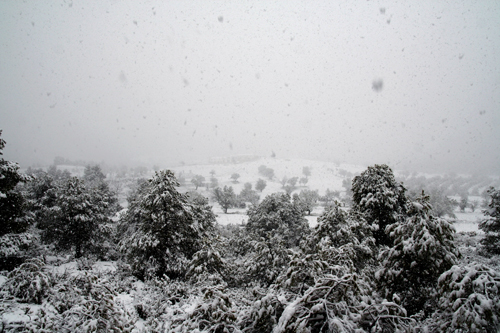
Er….. in the snow. Spring showers yes but a blizzard! The aljibe is ready to overflow. And my 19 year old niece and her friend are visiting for the week, keeping warm in the studio, ill prepared as they are for these weather conditions.
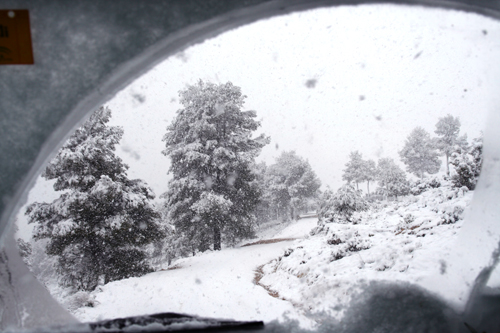
The drive home from school was quite fun too!!!
Permalink
March 29, 2009 at 3:52 pm
· Filed under Design, Environment
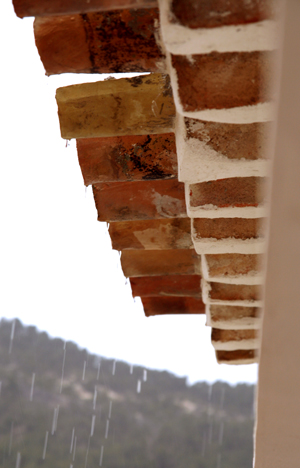
It can rain in Spain. And it’s much needed ahead of the oncoming summer. And can I say, without a hint of modesty, that the Los Gazquez rainwater harvesting system is working a treat.
The wild, wet weather front came in last night sometime and didn’t abate until midday. I checked the water deposit (aljibe) and we had about an extra 20,000 litres. All fresh, clean beautiful water.
We didn’t want to spoil the traditional design of the house so we constructed a system of canals (acequias) around the building at ground level. The rainwater falls from the roof in to the canals and is carried away to the water deposit. It sounds simple, and indeed it is, but it’s construction took a bit of engineering. It even, at one point, takes ground water from a field drain, why waste that perfectly good source too!
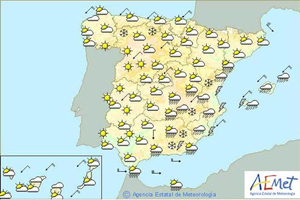
And now more rain comes and maybe a bit of snow. It’s amazing really, we went for a walk yesterday wearing tee shirts in the hot sunshine. Nevermind, we console ourselves, housebound as we are, that the oats in the fields will be happy, the olives and the almonds will be happy and in the morning I can have an extra long shower for a treat.
Permalink
March 28, 2009 at 7:37 pm
· Filed under Landscape
Permalink
March 24, 2009 at 2:55 pm
· Filed under Family, Landscape, Sol and Sesame
Running south and west and marking the perimeter of our land here is ‘La Barranca’. It’s a normally dry river gorge, however it can run with water as a consequence of a weather event or the run off from spring rains.
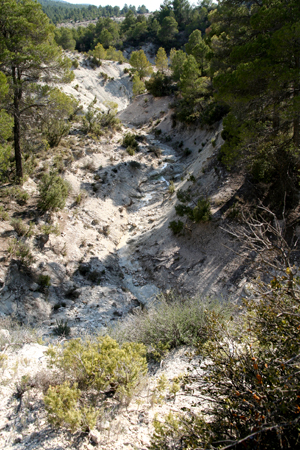
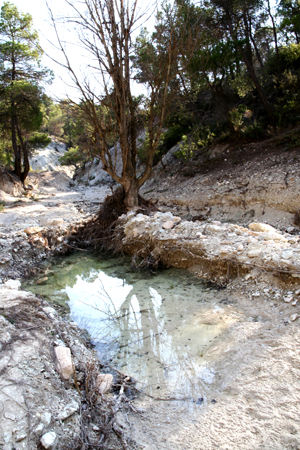
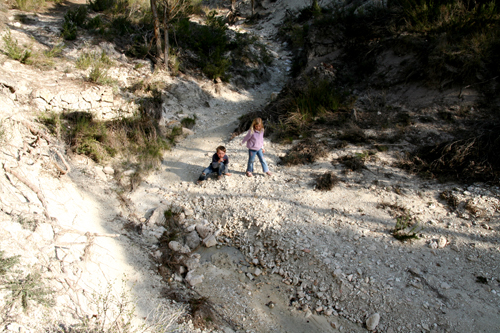
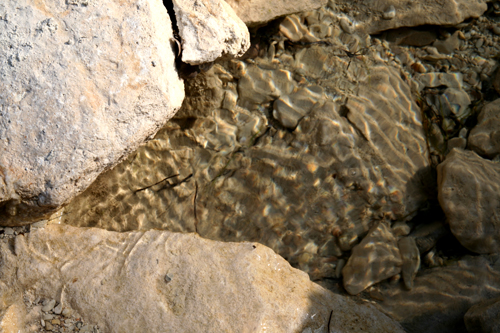
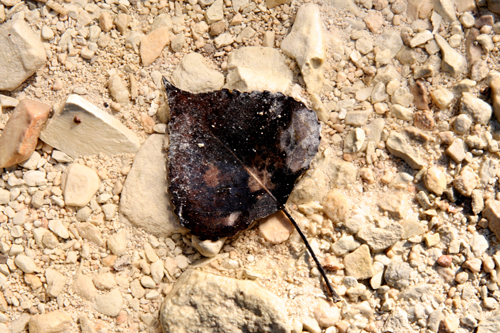

The end of another exploration.
Permalink
March 23, 2009 at 12:48 pm
· Filed under Creatures
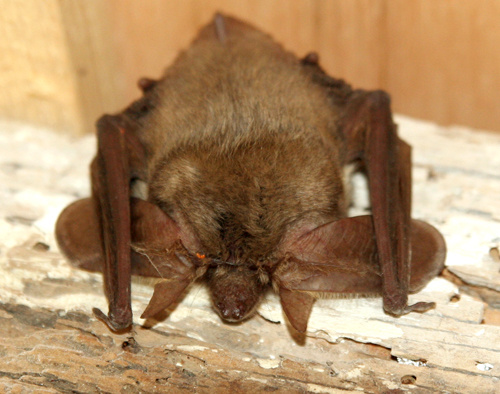
Ha, ha. Nick from Iberianature asked his expert, Xavier Puig, for an identification and here it is…
Hola Nick
Es un orejudo gris (Plecotus austriacus). Los orejudos son los únicos que pliegan las orejas y dejan los tragos echados para delante. En Andalucia no hay orejudo dorado, o sea que no tiene confusión.
Saludos,
Xevi
It’s a grey long eared bat and what he says is that it is unique in folding it’s ears behind it’s wings in this fashion. He also says that it can be confused with the golden bat but we don’t have this species in Andalucia, so it has to be the grey.
So many thanks again to Iberianature and to Nick and to Don Xavier.
Within twenty four hours I have the answer to a question which would have taken forever before the internet. Amazing.
P.S. I opend the window at duskyesterday and he has gone ito the night.
Permalink
March 22, 2009 at 6:07 pm
· Filed under Creatures

I first spotted this little chap reaching to turn the light off when I went to bed last night. He flew around our bedroom once or twice and then left. ‘Another Noctule bat’ I said to myself. How he got in I have no idea, and often as not they disappear in similarly mysterious ways.
However, next morning, having completely forgotten about the bat arrival the night before I walked into the shower, started enjoying the hot rainwater when I spied him. Not a Noctule bat at all, but something completely different. I had to stand on a chair to take his photograph (after my shower naturally) and you can quite clearly see those huge ears tucked under his wings.
But what is he? First portal of call ‘Iberianature Forum’ and within the hour Jesus Contreras (indalodeoz) came back with the suggestions Muercielago rabudo/ Tadarida teniotis/ European free-tailed bat or Orejudo gris/ Plecotus austriacus/ Grey long-eared bat or Orejudo dorado/ Plecotus auritus/ Brown long-eared bat. Sadly I could not find a sufficiently clear image on the internet to qualify a reliable identification.
However Nick from Wildside Holidays has come up with a possible solution. He has e-mailed my picture to a bat expert for confirmation. Now I am on tender hooks. Could it be a rare anti-deluvian beast unseen on the Iberian peninsular since the Moor took his last sigh?
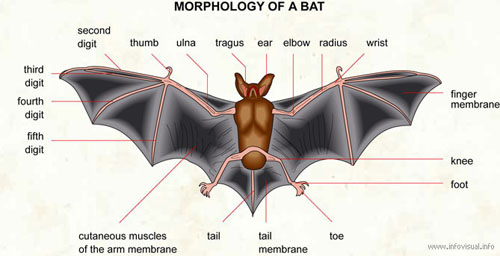
Jesus sent me a link to this site which is quite nice. I love the division of a flying mamal’s wings being described as fingers, which of course is exacly what they are. If you want to know more about bats you need go no further than here.
Finally, for all those people out there who are convinced bats will get stuck in your hair or drink your blood, let me describe them in another way. They are like gerbils with wings who eat all the insects who would get stuck in your hair or drink your blood. For me our visitor is a delight.
As dusk approaches do I open the window in the shower room to let him out or will I be inviting more of his kind in? Let’s see.
Permalink
March 19, 2009 at 8:50 pm
· Filed under Vida los Velez
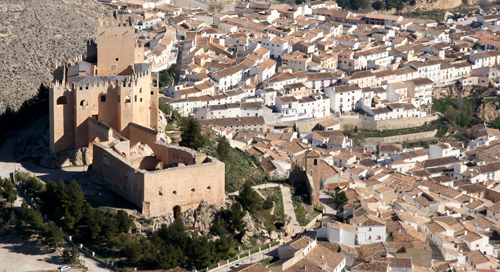
Velez Blanco, our pueblo, dominated by the imposing Castillo de Los Fajardos. You can clearly see the original Moorish fortification in front of the later Renaissance building. At 1070m (3531 ft) above sea level, that’s only 29ft lower than the peak of Snowdon in North Wales, it’s a good point to place a fortification, protecting as it still does today, the fertile valley below, fed by a natural watercourse. Why else would the Moors have chosen such a place?
Permalink
March 18, 2009 at 4:05 pm
· Filed under Vida los Velez
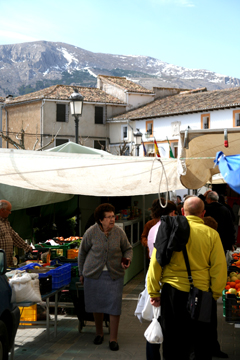

Nearly all our fruit and vegetables come from one or other of the three weekly markets here in the Comarca Los Velez and I think Maria is my favourite. The children eat churros (ok, me too). And we get to buy things the little old local men grow in their Huertos, which is a small holding. I love the idea of buying big bundles of dried chamomile cut with a scythe from the meadow.
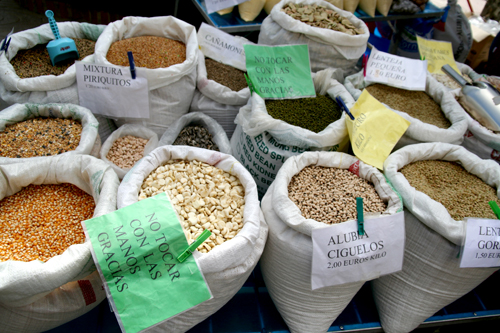
Be warned though, pointing enthusiastically at lentils in an effort at comaraderie with the vendor exclaiming in your best Spanish ‘lentejas!’ will render yourself with the answer you already know to be true. ‘Si’ he replies. But to double your inanity and point at another sack of some dried foodstuff and say ‘and these, they taste good?’ is frankly embarrasing when he replies ‘para pajaros, si’. It’s birdseed.
Permalink
March 17, 2009 at 2:38 pm
· Filed under Landscape
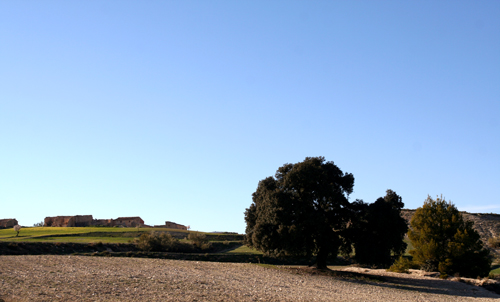
We went for a walk in the Rambla del Cajar yesterday. It flows (occasionally) from the barranca at Los Gazquez towards Bizmay, turning east towards El Alcaide. Here is a wonderful big Holme Oak.
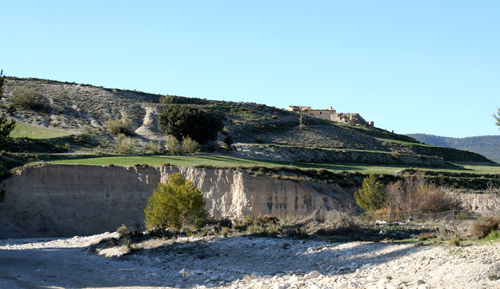
When the rambla flows it cuts these neat meandering banks into the limestone clay.
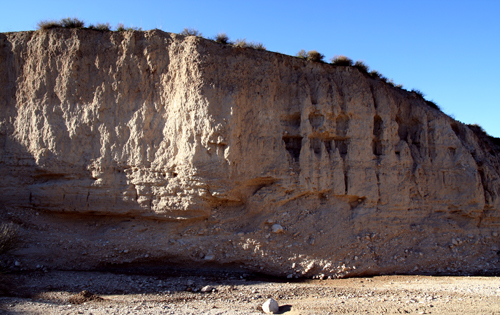
Like giant adobe wall construction, in time they dissolve from the top in precipitation and are undermined from beneath when weather ‘events’ make the water flow.
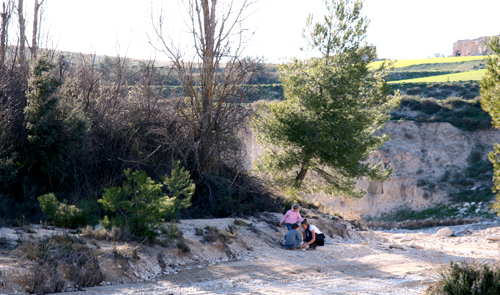
And it’s a great place to fossil hunt finding ancient ferns in the soft rock, petrified reed tips and sea shells at 1000m up in the mountains. I wonder if it’s time to start reading ‘The Voyage of the Beagle’ to the children, or maybe stick to the ‘Tangshan Tigers’ for the moment?.
Permalink






